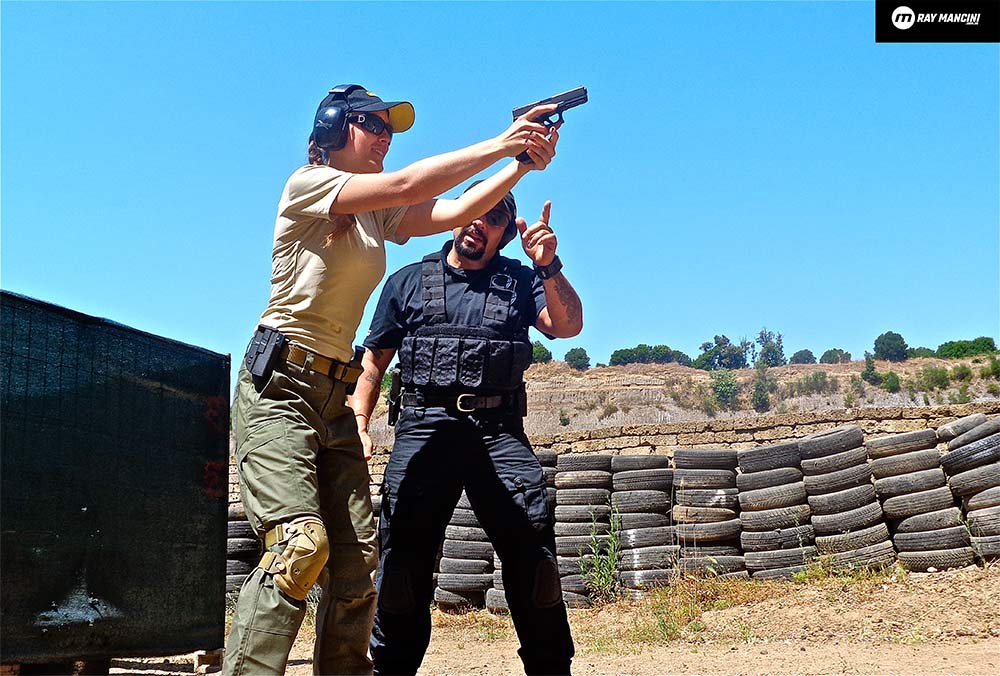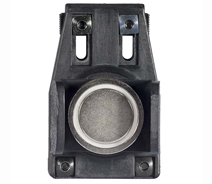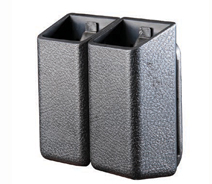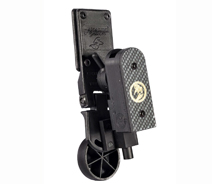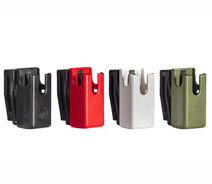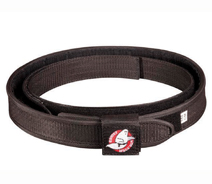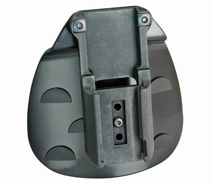Motor Learning And Feedback Strategies For Firearms Instructors
Shooting Instruction, Theory & Practice
Learning Style
Auditory, visual, kinesthetic. No one is “pure” in one style, but a hybrid of all three with dominance in one. Industries with firearms requirements often attract kinesthetically-dominant learners. Ideally, the instructor must make an early assessment of the trainee’s learning style in order to best deliver instruction.
Examples:
- A trainee does not respond to verbal instructions of a technique but succeeds after being shown. (Visual learner).
- Verbal instructions and demonstration fail to correct a stance imbalance. Placing hands on the legs and manually adjusting may produce better results. (Kinesthetic learner).
Auditory learners may struggle initially in the live-fire shooting environment. Sound is muffled through hearing protection and gunshot noise may cause initial stress and apprehension. Acclimatization to the shooting environment may be necessary before the individual’s strongest and preferred learning style becomes possible. However, the course of fire is driven through auditory instructions and auditory learners may be at an advantage to operate in this environment while individuals with other learning styles may lag.
Motor Skill Acquisition
How do we acquire new skills?
We are designed to learn. From our first steps, to reading, to sport and trades, our lives are spent learning. With every new skill or even memory, our brains change. Some skills are primarily mental in nature (maths, history) while others are mainly physical (basketball, shooting) and still others like playing a musical instrument lie somewhere in the middle. Regardless of the activity, when we talk about “learning”, we are talking about a process by which practice produces fundamental changes in the brain reflected in the acquisition of new skills.
The exact mechanism by which this happens isn’t fully understood, nor does it need to be for our purposes. We’ve all learned countless skills in our lives, often without really thinking about how we did it. Yet when learning something new, especially as adults, we often struggle. To help move us along, we’re going to look at two related concepts, practice and feedback, and consider how we can use this knowledge to improve our performance. We’re going to focus on physical skills, though most of the same principles that apply to learning to shoot work just as
well for learning, say, French.
When we practice a physical activity like a tennis serve, we eventually create a mental representation of it, a kind of map in which the performance of the activity is recorded. Scientists call this a “motor program”. Imagine that we hooked you up to a machine that measures brain waves and had you practice your tennis serve. Now imagine being hooked up to the same machine but simply sitting in a chair and *thinking* about serving, going over all the details in your head and *practicing* over and over again. Believe it or not, the signals from your brain when you’re actually hitting a serve on the court, and just sitting thinking about it would look very similar. Now take a different example. Imagine yourself picking up a ball off a table. Simple enough, right? You open your hand just a little wider than the ball, reach out, wrap your hands around it, and use just enough force to lift it off. But now really have a think about what’s involved. Your hand moves through the air towards the ball while your eyes and brain coordinate how wide to open your hand and your bicep begins to anticipate how to use just enough force to pick the ball up. Remember, your fingers haven’t actually touched anything yet, your forearm and bicep haven’t felt any resistance to pull against. The entire process has basically happened in your brain first, and then, a few hundredths of a second later, your body has executed it. This mental and physical dance is so highly coordinated that we don’t even notice it.
Of course, it would be great if we could just sit back, think about playing pool, swimming, shooting, and so on, then stand up and just go do it. Unfortunately, as we all know, that’s not how things work. In order to create that mental image, the motor program, we need to practice. “Practice makes perfect” after all. When we practice a physical activity, we imprint the pattern into our minds. The more we practice, the better that imprint becomes. Our brains literally create stronger connections between related activity centers the more they work together. Practice incorrectly, and you imprint an incorrect pattern. Ever noticed it’s a lot harder to relearn something you’ve learned wrong than to learn it right in the first place? That’s because the mental image has to first be undone before it can be set right. If your “bad” habit is deeply ingrained, it can take a long time to unlearn.
Let’s dig a bit deeper. Practicing a skill in individual steps is often how we get started. “Draw, load, and make ready.” “Draw and assume ready position.” “Fire from the ready position.” There’s a lot of advantages to starting out this way. We break things down into bite size chunks and practice the individual skills. But it’s easy to take this too far. For example, what happens if you have to draw and shoot in one action? If all you’ve ever done is step-by-step, block-by-block practice, then integrating all those little steps into one movement might feel really strange. It’s just as easy to imagine the opposite situation, shooting only from the holstered position and rarely or never from the ready. Remember the ball on the table, the mind has to be able to formulate the action before the body can perform it. So how should we practice? As we move from the novice stage, we need to continue to challenge our minds and our nervous system. Gradually, we should introduce elements of randomness into our practice. When we don’t know exactly what’s coming, we are forced to hold multiple possibilities in our heads simultaneously. As we do this, we’re able to compare different patterns, often subconsciously. This continual processing of information is a powerful learning mechanism. Additionally, random practice often makes us abandon an existing pattern in our minds, overwriting it each time we practice. This might sound like a bad idea at first, and it definitely would be when we’re total beginners. But, as we progress, such mini procedures of learning, unlearning, and relearning form a powerful, flexible comprehension of what we’re trying to achieve. The brain, like the body, adapts best when it’s challenged sufficiently.
Now let’s move on to the second element of learning we touched on previously, feedback. A lot of times, we think of feedback as a coach yelling at us, a heart rate monitor beeping at us, or even the numbers on the scoreboard accusing us. While all that is in fact feedback, it’s what’s known as external feedback. The vast majority of feedback is internal, coming from our own senses. How does the ball feel in your hand? Which way did the pistol recoil? Did you hit nothing but net or bounce it off the backboard? Our senses provide a continuous stream of information we use to adjust our actions so that we can achieve our desired results. At this point, it’s important to make another distinction. Our senses can tell us both WHAT we did (hit centre body mass) and HOW we did it (applied even pressure on the trigger). We need to focus on both, but not necessarily at the same time. In the beginning, when we don’t know much, the HOW is vital. Once we’ve learned good habits and some of them have been properly “programmed” in our minds to the point they are running somewhat automatically, we need to focus on the WHAT. Once we become proficient, the performance of a skill is a delicate interplay of both subconscious and conscious processes. We need to maintain a balance. Go too much towards the subconscious (on auto-pilot) and you WILL make mistakes. Surprisingly though, focus too much on consciously correcting every little detail and we interfere with the subconscious part of the operation. No golfer can possibly concentrate simultaneously on every aspect of their swing. And when researchers force them to focus too much on mechanical details they’re used to ignoring, performance inevitably degrades. This is where focusing on the WHAT can become more important than the HOW. Missing to the left? Assuming the mechanics are sound, our attention should begin to focus on correcting this RESULT rather than trying too hard to flex this or squeeze that.
So where does that leave the trainer in the mix? Remember, we said that a “coach” provides external feedback. This is vital when our own skills and experience aren’t sufficient to make the corrections we need to make. In a way, what we need externally from the trainer for success mirrors our own internal HOW/WHAT feedback strategies. While some external feedback is vital to help us continue to improve, TOO MUCH feedback will make us worse. This is what is known as the PARADOX OF FEEDBACK. Specifically, we need SOME feedback for best results, but any more than that actually makes us perform worse. Anyone who’s spent time with a child already knows this. A child almost never does something at an an expert level. Naturally, we offer some corrections (“it’s those ducks, not those duck”), but we instinctively know that if we hammer them on every mistake, they will shut down, get frustrated, and stop learning. Our adult brains are really no different. If the addition of feedback leads to a decline in performance, it’s time to back off. The trainer must assess the level of feedback someone is capable of absorbing, deliver it, then gauge whether more can be handled. It’s as much art as science. Effective coaching feedback will help your students learn how to correct errors quickly. After a shooter performs a drill, you may provide them with certain and specific feedback. Providing essential information to a shooter at just the right time can accelerate and improve their progress dramatically.
And here are three main reasons for providing feedback and meaningful information to shooters after a performance:
- reinforce good habits and performances or discourage poor ones
- speeds up learning progress
- inspires and motivates
The bottom line is: Firearms Instructors need to find ways of defining and developing their own style and turning scientific information into skilled performances.
Ray Mancini
www.raymancini.com.au
Training Courses
Pro-Shop Products
A revolutionary system shot shell pouch, which provides fast drawing of 2/4 shot shells at the same time and immediate reloading of the gun. As the springs are made of hardened metal, the retention don't change. Rotating clip can be positioned by the shooter individually. PRO8 up to 8 shotshells in the same holder to reduce the space on the belt.
The New Magnetic IPSC magazine was designed with the IPSC shooter in mind The Magnetic system is available in three versions for unlimited choice of carry options. For stationary matches you can use the MAG1, for running matches with higher risk of losing a magazine you can use the MAG 2. The MAG3 combines the IPSC pouch with the magnetic system to quickly add a spare magazine without losing another inch of belt space.
Magazine pouch made of ABS is very high impact resistant. An internal tension spring holds the magazine firmly inside the pouch. Thanks to a reduced spacer and size it is ideal for concealed carry – both for police, military as well for sport (IDPA, IASC and ACTION SHOOTING).
The EVOLUTION of the famous AMADINI Ghost SphereSystem has resulted to the Super Ghost ULTIMATE. This holster is the fastest, safest and most innovative IPSC holster in the world. Copied by many, equaled by none, the Ultimate is the choice of shooters all over the world. Fully free-floating, adjustable in tilt, height and distance from your body, the Ultimate can be made to fit your needs 100%. The locking mechanism is the safest and fastest on the market and allows…
The new 360° Universal Ghost Magazine Pouch is supplied with two cups for vertical or horizontal carry, internal retention of the magazine and gives complete carry freedom and flexibility due to the rotating speed clip. Different types of retention springs are available to ensure the best suited retention for your needs. The cups are also equipped with a system to remove all magazine movement inside the pouch.
Enables use of the holster for concealed carry. The module positions the holster close to the body without the use of a special belt.

